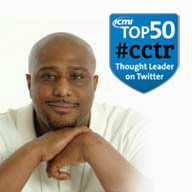This article first appeared on ICMI
Over the years, I have interviewed many candidates for numerous roles. During this time, I have refined how I conduct interviews. This is in part due to my maturity, training, feedback and discussions with colleagues. During this time, I have learned is there is more than one way. There are different styles of interviews available during the hiring process. You must determine which works best for you based on the role you're trying to fill and it significance.
One of the best lessons I've learned is that the interview sets the expectation for potential candidates. This sounds cliche, I know. While the interview does help a candidate get a glimpse into the company, it also offers the hiring manager an opportunity to display their management style, demeanor and express their intentions. I am a firm believer that my performance in the interview will be matched by the candidate’s performance once hired. As such, the interview must not be taken highly, should not be rushed, and must give the interviewee every indication that their time was valued. This has point of view has contributed to my contact center’s ability to hire and retain exceptional talent.
When interviewing new agents, my process includes the hiring manager, team/technical leads and myself. Each of us brings unique insight based on our individual roles and the relationship we have as a management team. Including other colleagues also allows me the opportunity to coach and train newer members of leadership on the nuances of interviewing and hiring the ideal candidate. But more than that, these varied perspectives help ensure we have the best candidate, not the one we like the most.
The interview itself consists of four parts, each of great importance in determining the best available candidate.
Interview: The interview is two parts. The manager and team leads will initially look to gain insight into the candidate’s background while also evaluating their interpersonal skills.
The second part of the interview includes me and the hiring manager. During this portion of the interview, it is my aim to drill down on their soft skills and technical skills. In addition, we view the candidate in light of department metrics. My desire it see how their background will aid them in working in an environment where metrics and performance management are used.
Testing: To ensure the proficiency of needed skill sets, candidates are given a test. However, a pass or fail criteria is not used. Rather, the aim is to gauge their troubleshooting style and their ability to solve complex problems.
Shadowing: In my opinion, it is wise to bring candidates to the contact center floor and allow them to shadow agents during calls or chats. This will provide them the ability to see the pace of work, the support volume, and the work environment.
Closing remarks: This allows the candidate an opportunity to ask questions, or seek clarification about the role or the company. When all things are equal, a candidate who is engaged, prepared and well informed about the position and company can distinguish themselves for the others.
While some may consider this process excessive for staffing contact center agents, it is also deliberate in that it identifies the best candidates. Not to mention, it shows the value we place on their role. Only the best are selected and they feel that when they come on board! Furthermore, applicants get to meet leadership team which establishes an early rapport and familiarity that lends itself well to agent engagement and trust.
Who should be included in the interview process? That depends on the results you desire.

Sean
is a Contact Center manager with over 13 years of experience. He has a
terrific pulse on incorporating innovation into the contact center. He's
implemented social, outsourcing partners, new technology, and new
products, while maintaining an award-winning contact center.
His contact center is a past winner of the ICMI "Global Call Center of the Year" award for Small to Medium-Sized Centers.
Follow on Twitter @SeanBHawkins
By: CJ Silva
It may be hard to believe, but 2015 is almost here. In anticipation of the New Year, many call centers have already begun implementing new policies and procedures that will maximize their performance for many years to come with the help of call center analytics.
As always, the focus is on improving customer satisfaction, increasing agent productivity and reducing overhead. However, in 2015, we’ll see contact centers place an increased emphasis on using technology to meet callers’ specific needs and preferences. This may sound easier said than done, but it is possible. To get the most out of your contact center, start incorporating these call center trends of 2015.
Striking a balance between phone calls and self-service systems. Automated services have become much more common over the years and it’s easy to see why. Callers can use the automated system to take care of common inquiries rather than waiting on hold for half an hour only to resolve their issue in five minutes. For this reason alone many people prefer to use automated services.
Contact centers also benefit from self-service systems. Because phone lines and agents are not tied up with simple, easy-to-fix issues, they can devote more time to complicated inquiries or particularly disgruntled callers. This improves customer satisfaction as well as agent productivity, a perfect two-birds-with-one-stone situation.
Communicating with callers across multiple platforms. Contact centers are not limited to phone calls to interact with callers nowadays. Chats, video calls, and mobile apps have all been shown to be effective ways to communicate with customers and resolve issues.
Multi-platform services give callers the freedom to use multiple avenues of communication to connect with contact centers. Not everyone likes being on the phone, and most people would rather not spend an unspecified amount of time on hold waiting for an available agent. Fortunately, with new technology, callers can reach your contact center at the time that works best for them over the medium they prefer. Multi-platform services also improve agent efficiency by reducing complaints and increasing customer satisfaction.
Increased use of cloud storage. In addition to making it easier than ever to share information with customers and other contact centers, cloud storage can also help reduce your overhead by eliminating the need for large IT departments and servers that require space and a constant supply of electricity. Cloud storage is particularly useful if you have more than one location or employ virtual agents.
Improved identification and verification processes. Many current I&V processes are estimated to make up nearly 20% of all call times. For example, in a twenty minute call, that mean would that four minutes were spent verifying a customer’s identity – far too long. To streamline your contact center, you want to make sure agents are making the most out of their calls without wasting valuable time on inefficient processes.
In 2015, we will see an increased use of biometric technology to identify and verify customers. Fingerprint scanners on mobile apps and voice identification on phone calls are two popular options that many companies are working towards implementing. Simplifying I&V procedures will allow agents to spend more of their time attending to customers’ inquiries without reducing the number of calls they take. It’s a win-win situation for both contact centers and their callers!
Greater reliance on real-time metrics and agent reports. It’s easier now than it has ever been to collect data about people’s likes, dislikes, habits, and relationships. As a result, advanced metrics are being used in everything from sports analysis to psychology.
Incorporating advanced metrics into your contact center will give you greater insight into all of its moving parts in real-time, enabling call centers to direct specific calls and inquiries to the agents that are best-suited to handle them. This allows contact centers to utilize their agents’ specific skills to increase agent productivity while improving overall caller satisfaction. Advanced metrics can even be used to assess agents’ specific weak spots and re-train them accordingly rather than rehashing information with which they are already familiar.
With all of this in mind, perhaps you should consider implementing some of these practices at your call center. A new year is a great time for a fresh start, so start planning today!

CJ Silva is VP of Operations at KOVA Corporation.


